Decorative plaster in the kitchen: varieties and features of application
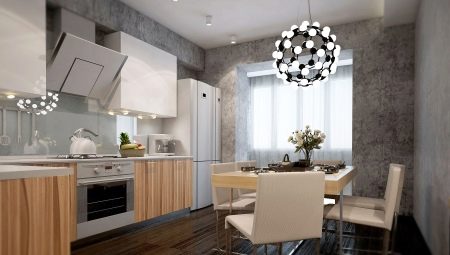
The kitchen is the most important part of the house. Both the hostess and the whole family spend a lot of time there. Decorating a cooking area requires special attention. The wall material must withstand aggressive conditions and be safe. Decorative plaster will help make your kitchen interior interesting and unique.

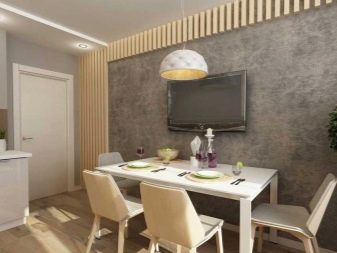
Peculiarities
Decorative plaster in the kitchen looks attractive. Its composition is strikingly different from that used for simple alignment. A special paste for interior wall decoration at the very end of the decoration. In an apartment, such plaster can be used absolutely in any room. It contains small grains of marble, sand, granite, quartz.
There are no dangerous and toxic substances in it, it is environmentally friendly. Decorative plaster has antiseptic additives, so it is free of fungi and mold.
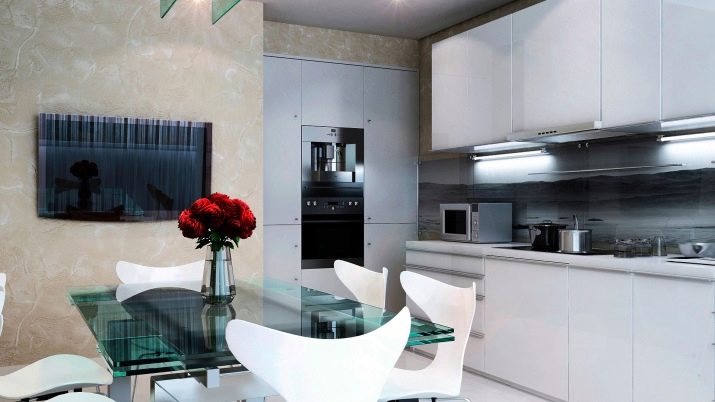
This feature allows use this material safely in rooms with high humidity. You can use it on any surface, even metal.
Wall decoration with such plaster does not require professional skills. The coating turns out to be attractive and reliable, it lasts for a long time. Decorative plaster is not afraid of mechanical stress, humidity and temperature extremes.
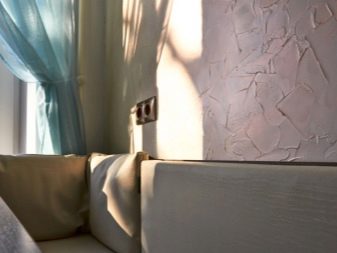
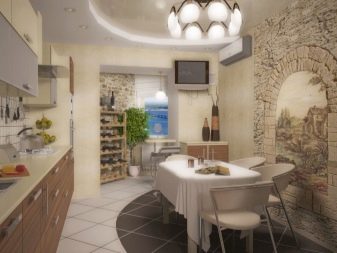
The main advantages of the material.
- It looks beautiful and unusual, has no seams. Allows you to create a unique design using textures, colors and stencils.
- Even with frequent cleaning, the composition does not rub off the walls.
- Economical consumption, which is directly related to invoicing.
- It is possible to implement complex design ideas.
- Air permeable, allows walls to breathe. Suppresses noise.
- It does not burn, therefore it is especially relevant in the kitchen with a gas hob.
Practical material allows you to make repairs for many years. It is only important to use high-quality decorative plaster and the right approach to its choice.
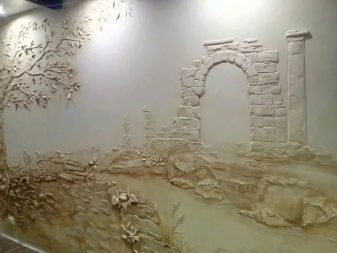

The main disadvantages of the material
- the composition is quite expensive;
- rust may appear on metal structures due to the application of a wet composition;
- if the walls are insulated with mineral wool, then it will not work to apply decorative plaster on them;
- in spot repairs, the use of the material is irrational.
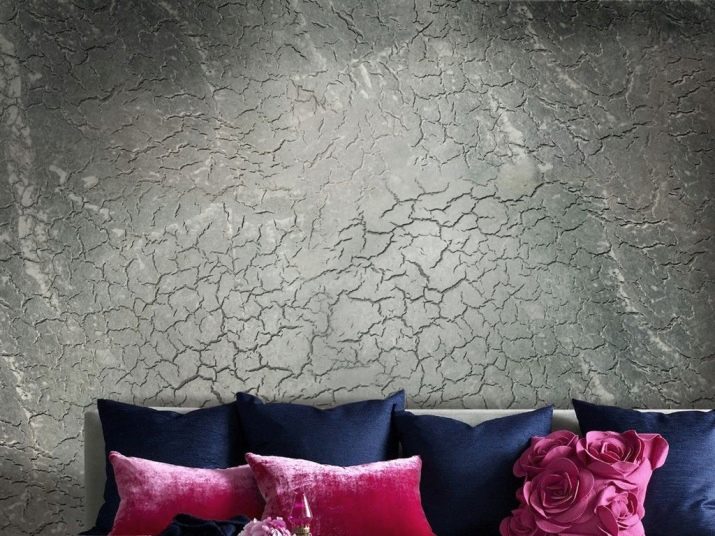
Species overview
Decorative plaster is divided into types depending on the technique of its application, composition, texture. Manufacturers use natural and synthetic materials for its manufacture. By the type of base, plaster is divided into these types.
- Mineral. It contains cement, lime and marble or granite chips. The surface of the wall with it is embossed. Such material is not afraid of moisture, it is durable and elastic.

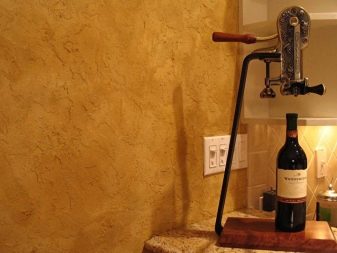
- Silicate. Liquid glass is used as a base. The finishing material is resistant to mechanical stress and moisture. You can even use it near the hob. It has a long service life - up to 50 years.
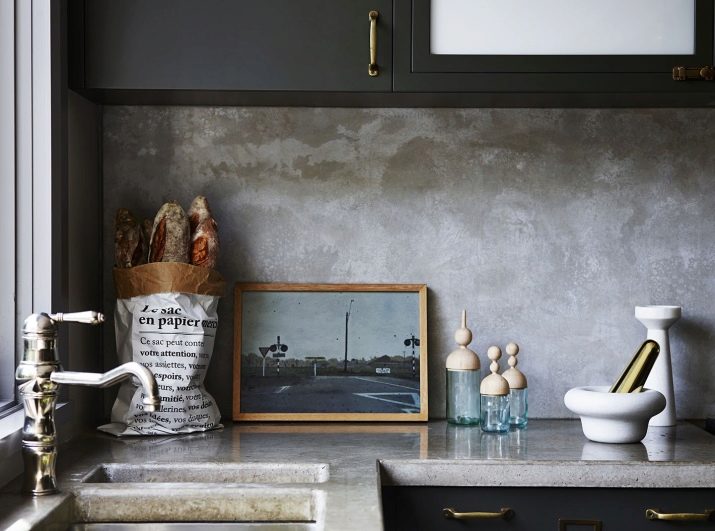
- Silicone... Its main component is resins. Such plaster is easily applied, it is plastic. It is noteworthy that such plaster can be used both indoors and outdoors.
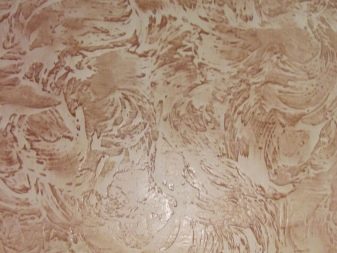
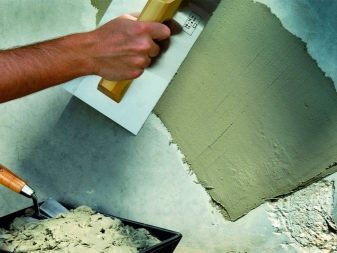
- Acrylic. Pretty practical option. The veneering is quick and easy, it needs a minimum drying time. This plaster is versatile and durable.
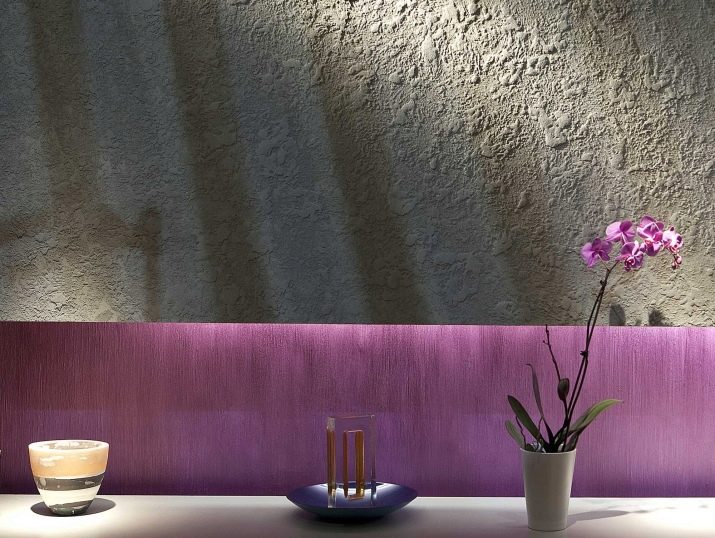
The texture of decorative plaster may vary.
It is worth choosing the one that best suits the style of your kitchen.
- Venetian. The walls after this finish shine with gloss and have no seams. With the help of various additives, you can make beautiful drawings on the walls.
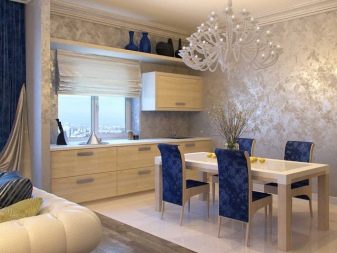
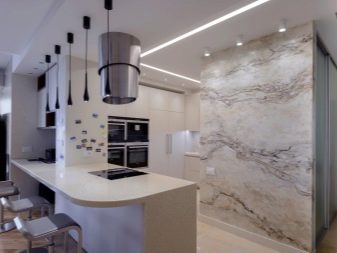
- "Bark beetle". The wall is obtained with grooves and patterns.
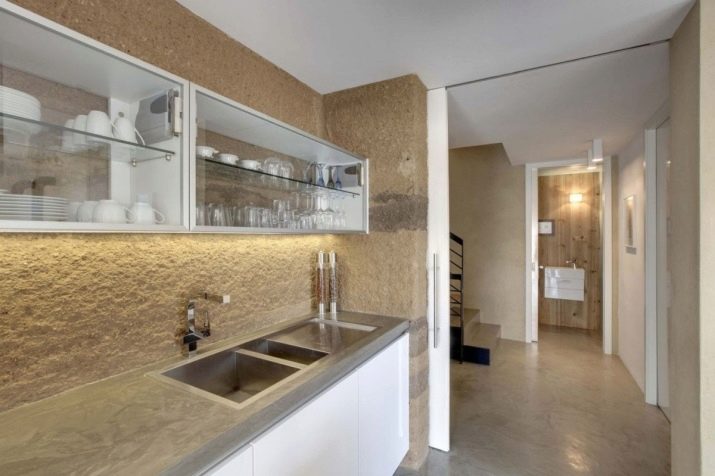
- Textured. Able to imitate both leather and wood. Differs in high cost.
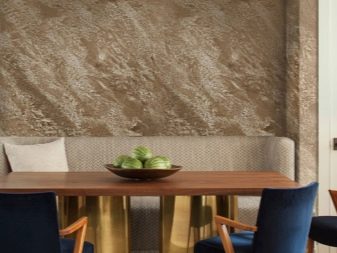
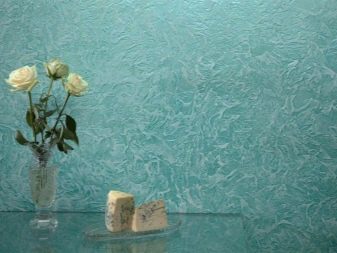
- Smooth. It is the most budgetary plaster. It goes well with bright and interesting kitchen furniture. The simplest washable plaster is practical and easy to apply.
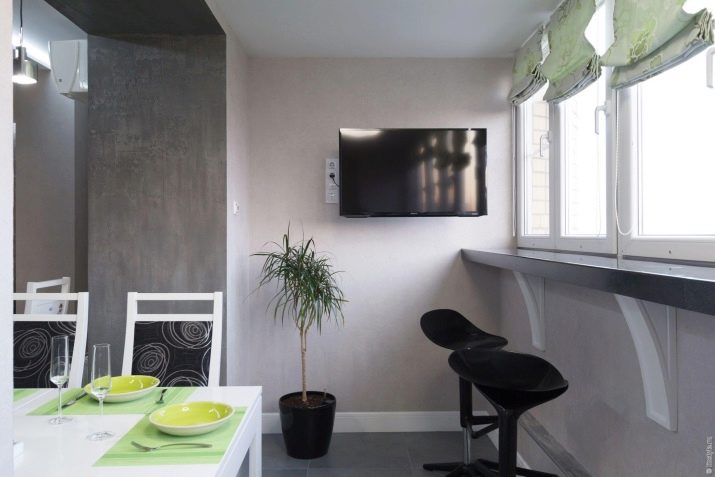
- Sgraffito. It is applied using special stencils. As a result, the plaster looks like a three-dimensional drawing. Can be applied to smooth plaster or any other material.
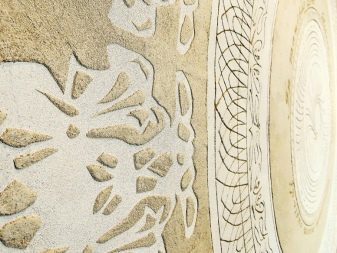
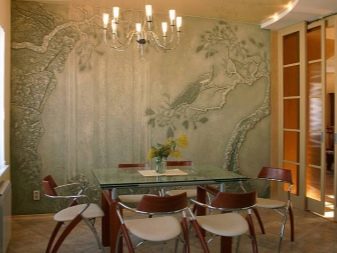
- Flock. Decorative plaster imitates a silk coating and has fabric fibers in its composition.
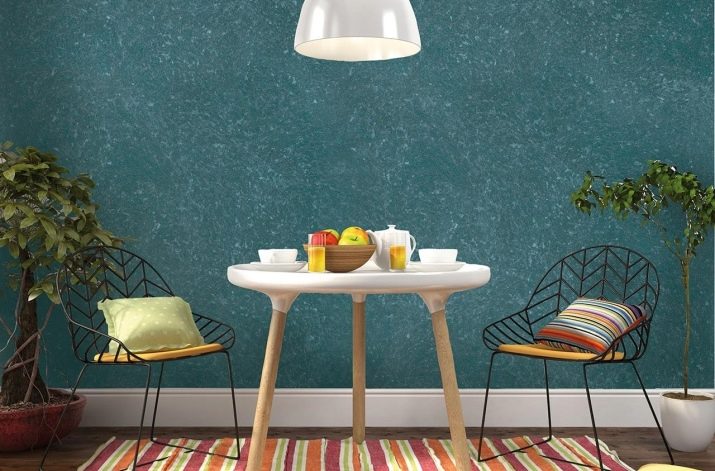
Manufacturers rating
The cost of decorative plaster directly depends on its type and manufacturer. Dry mixes are mainly sold, which must be diluted with water. You can buy ready-made plaster, but this option is more expensive.
Decorative plaster from such manufacturers has earned the trust of buyers.
- Ceresit (Germany). The company makes universal plasters. Its assortment includes "bark beetle", "fur coat" and compositions for mosaics. Environmentally friendly coatings are not afraid of mechanical stress, high levels of humidity, pollution. Mold does not appear on such finishes. The assortment consists of more than 10 types of decorative plasters with silicate-silicone, acrylic and mineral bases. Affordable cost and good wear resistance make these products popular.
It is worth noting that before applying the composition of this manufacturer, the walls must be especially carefully prepared in order to ensure its better adhesion to the surface.
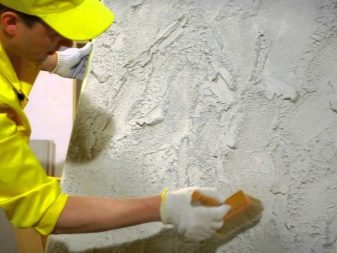

- Knauf (Germany). Mineral plaster Diamant from this manufacturer allows you to decorate the walls with "bark beetle" and "fur coat".Furrowed grained surfaces are attractive and resistant to external influences. The manufacturer offers a mixture of white, which can later be painted in any desired color. It is easy to work with the material, it dries quickly.
The finished surface can be repaired if necessary. Parts of the wall, where water often gets into, must be additionally treated with hydrophobic compounds.
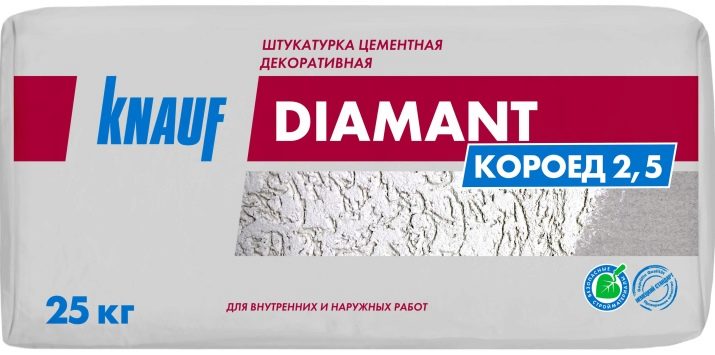
- VGT (Russia)... The Gallery line includes 16 textured and thin-layer types of plasters, paints and tools for working with these materials. The assortment includes a large selection of textures. It is recommended to use a primer from the same manufacturer, so the plaster will adhere better. It is noteworthy that these products are of acceptable quality at a low cost.

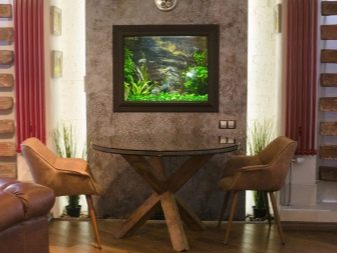
- Bolars (Russia). The most popular domestic manufacturer of building mixtures. Its assortment includes 12 types of ready-made declarative plasters. All are composed of mineral components, which allows you to create grooves and reliefs. The facing material is resistant to moisture and mechanical stress. It is quite simple to use this plaster; special skills are not required for this.
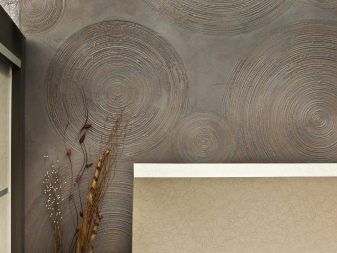
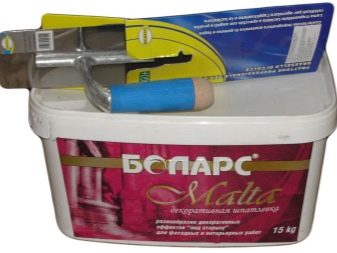
- San Marco (Italy). Premium thin-layer decorative plaster. A wide assortment allows you to decorate walls with 50 types of textures in one of 1500 shades. The company offers consumers a large selection of formulations and a high level of quality at a fairly high price. The latter is the only drawback of this brand's products. It is important to use additional materials from the same manufacturer and strictly follow the instructions.
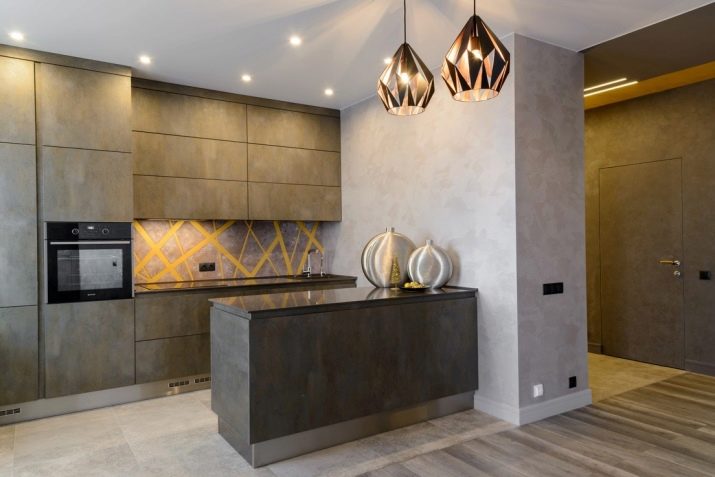
Selection of color and texture
The relief of the finish directly depends on the size of the kitchen. In a large room, you can experiment. Smooth walls are relevant in a small kitchen. The color options are quite varied. When choosing them it is worth focusing on the general interior and the color of the furniture.
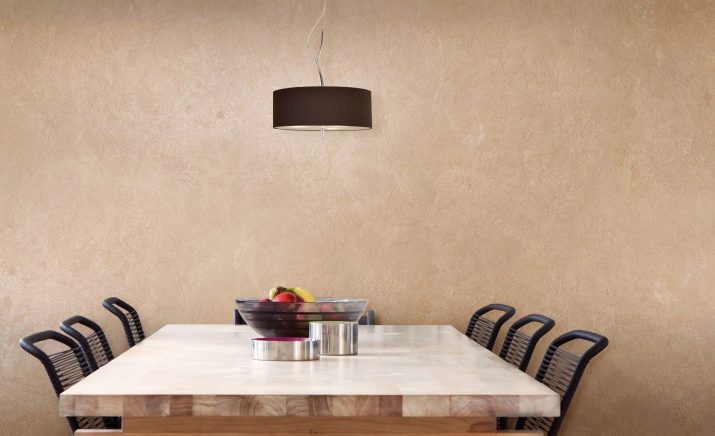
It is much more interesting to choose a texture. It is worth focusing on such criteria.
- "Bark beetle" is the most popular type of plaster. But do not apply it to the apron, as the grooves will be difficult to clean. This is a versatile option that can be combined with any interior style.
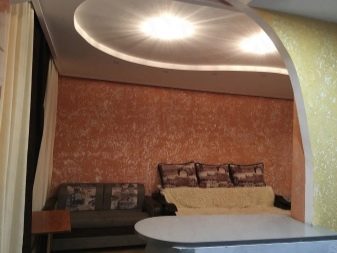
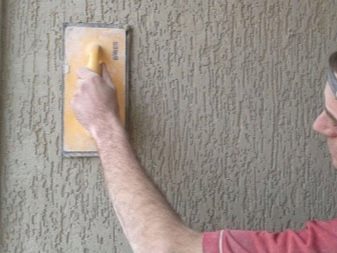
- Venetian. It is easy to care for, which allows it to be applied in any area of the kitchen. Looks good in styles such as loft, provence, classic and high-tech.

- Craquelure. Outwardly it resembles an acrylic "bark beetle", but more reliable and resistant to external influences. Suitable for modern or classic kitchens.
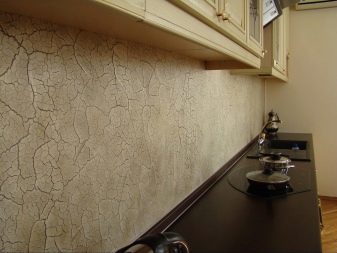

- Microcement with cement flour. Mostly found in loft-style kitchens. It goes well with brick and wood. You can apply a drawing on top of it, which is relevant for pop art, scandi, hi-tech styles.
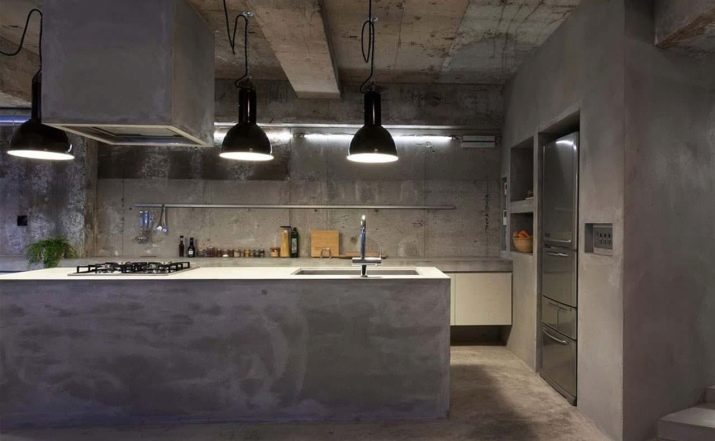
- Textured with imitation of cork or wood... Not relevant for wall decoration near the work surface, because it is difficult to clean. Looks great in the interior of the kitchen in the style of classic, eco, scandi and provence.
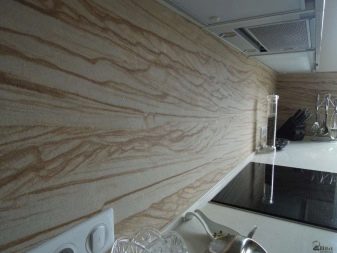

- Flock. Not suitable for small kitchens, but in a large kitchen it will look great. This material is difficult to clean, so you should not use it in the area of the apron. Suitable for finishing kitchens in any modern style.

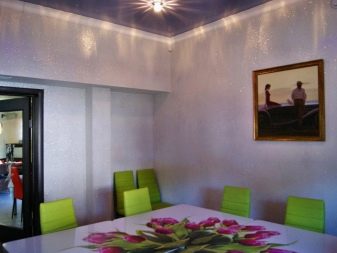
- Silk. This kind of plaster looks pretty good in a recreation area. Great for classic-style kitchens, no less relevant for Provence, Scandi and Eco.
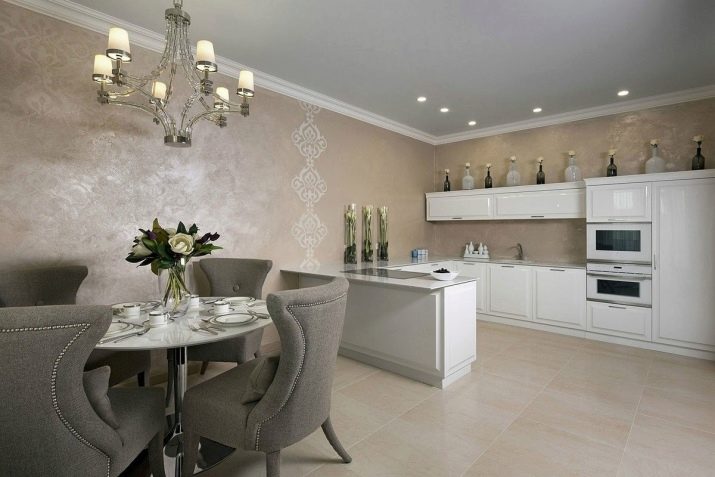
Application rules
Decorating the wall with decorative plaster requires preliminary preparation. The standard scheme may differ slightly, so it is worth considering the manufacturer's recommendations. In general terms, the finishing is done as follows.
- Wall preparation... It is worth removing the old coating and defects.
- Primer... It is worth using substances of deep application. It is best if they come from the same manufacturer as the plaster.
- Application of ordinary plaster. It is necessary to align the walls to the maximum ideal condition. Further work is possible only after the plastered walls are completely dry.
- Decorative plaster. It is worth applying the composition according to the manufacturer's instructions.
- Painting and polishing. The work is carried out one day after the previous stage.
It is not enough just to buy materials. You need certain skills in finishing work. If possible, it is worth practicing before surface treatment.
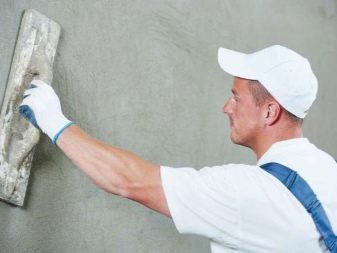
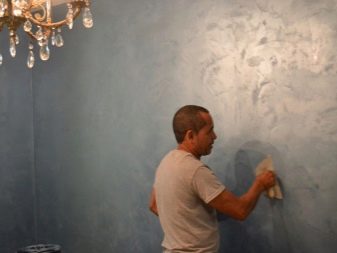
There are certain secrets to consider.
- The beauty of the decorative layer directly depends on the evenness of the walls. It is not worth saving at the preparatory stage.
- A primer that penetrates deeply reduces material consumption during finishing. Additionally, this will protect the walls under the plaster from fungi and mold. It is worth paying attention to the compatibility of the primer and decorative material.
- Material consumption directly depends on the relief and depth of the furrows. It is worth considering this in preliminary calculations.
- It is necessary to work with the coating quickly, distributing it evenly over the wall immediately after application. If you do not have this skills, then it is better to work in pairs. Decorative plaster hardens quickly and it will be problematic to correct the layer thickness and change the relief.
- It takes about two weeks for the coating to cure completely. It is worth limiting the mechanical effects on the walls during this period.
- A protective varnish or wax will help protect your kitchen walls from quick and deep soiling. This solution will further protect the plaster from moisture and cracks.

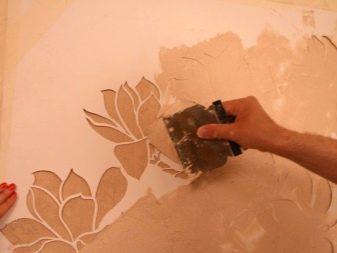
Beautiful examples
Decorative plaster in the interior of the kitchen is used quite widely due to its high wear resistance. Moreover, such a coating is much more durable than conventional wallpaper. Examples of using the material.
- Most of the walls are plastered, but the backsplash is tiled with easy-to-clean tiles. An interesting texture harmonizes well with smooth kitchen facades.
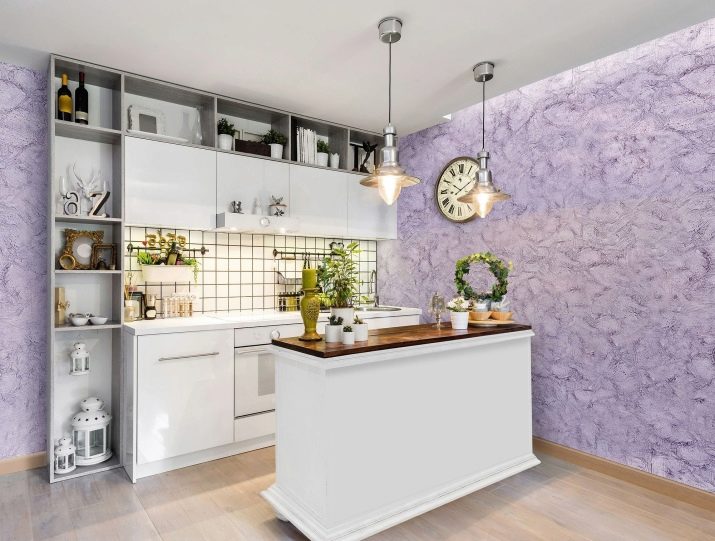
- Black decorative plaster with minimal relief looks attractive. The modern kitchen looks neat and does not require much effort during cleaning.
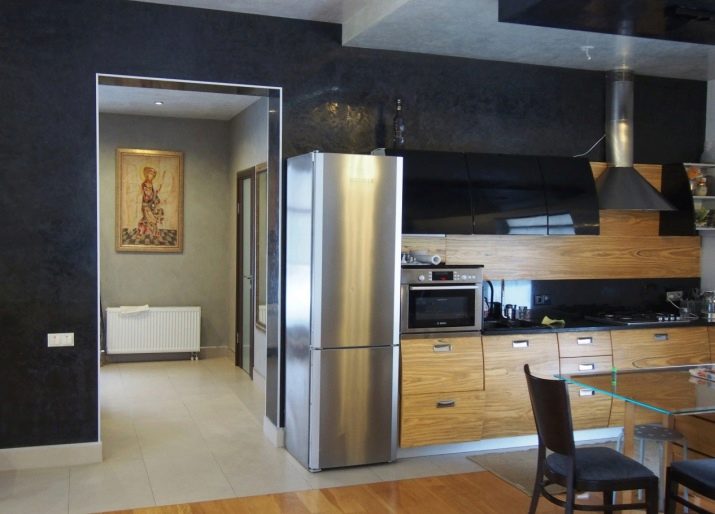
- A beautiful combination of white with light turquoise. The kitchen looks fresh. The wall trim on the side of the seating area makes it easy to clean the walls from dirt.
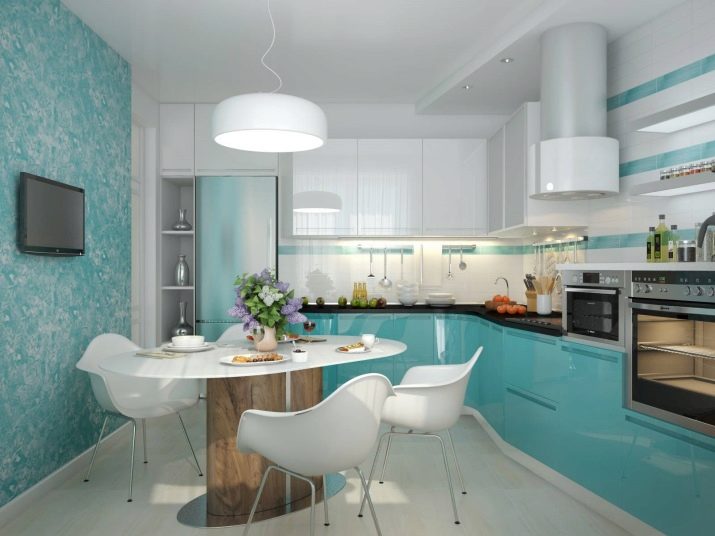
- Textured plaster is applied away from the work area, so it is easy to wash it. Mosaic imitation blends well with tiles near the hob.

- The use of decorative plaster in the loft style. A successful color creates a special atmosphere and also hides light pollution.
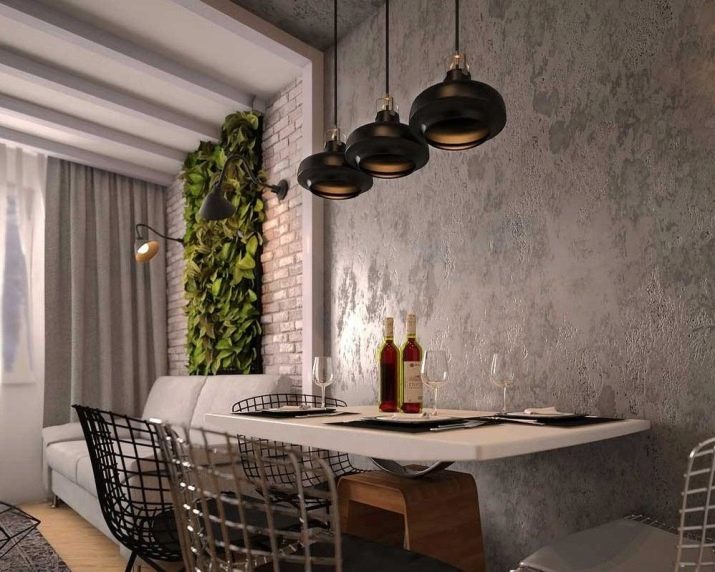
- The decoration is used at the entrance and looks very attractive. You can create such drawings using stencils.

For the application of decorative plaster "Marmorin", see the next video.








